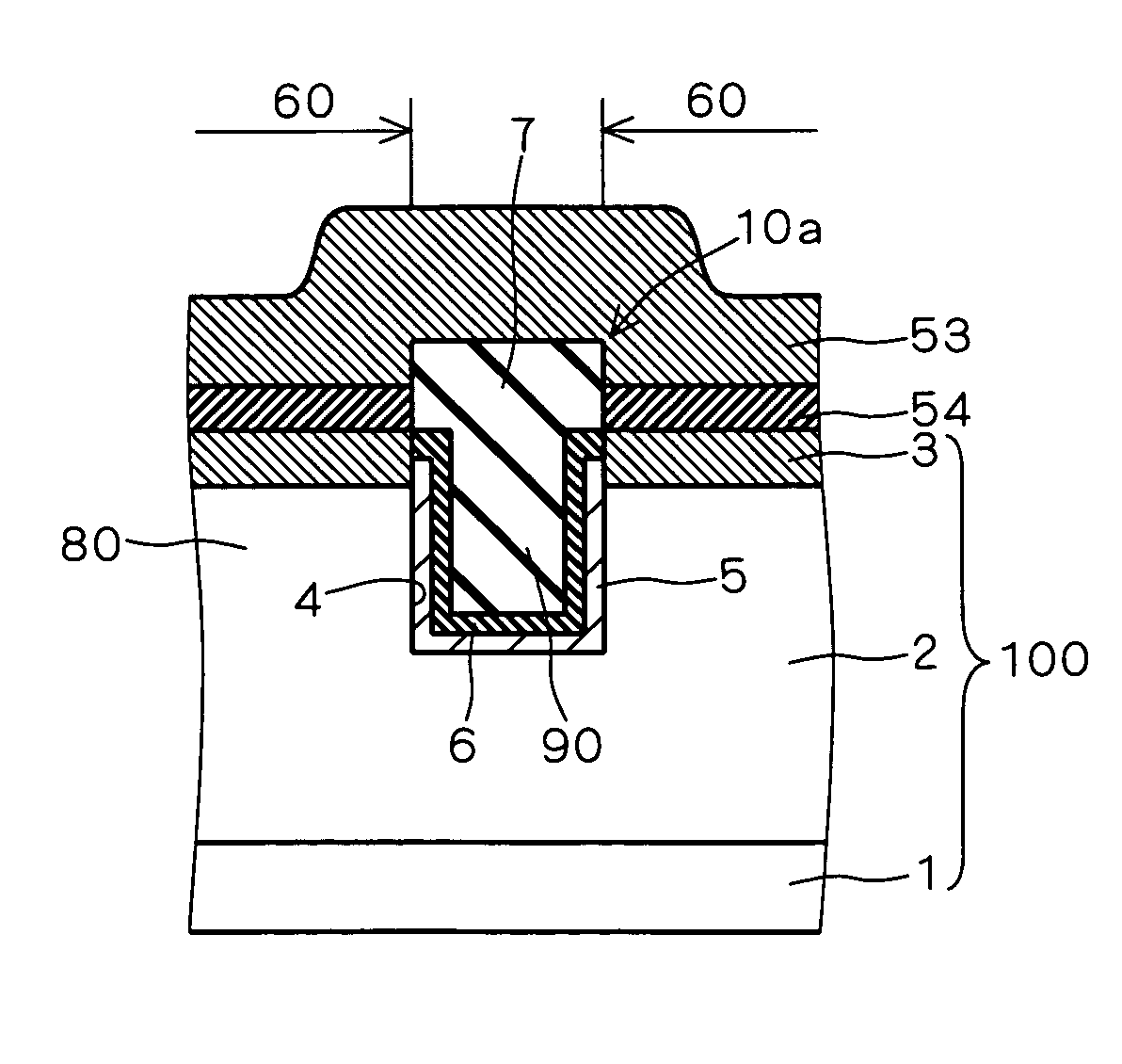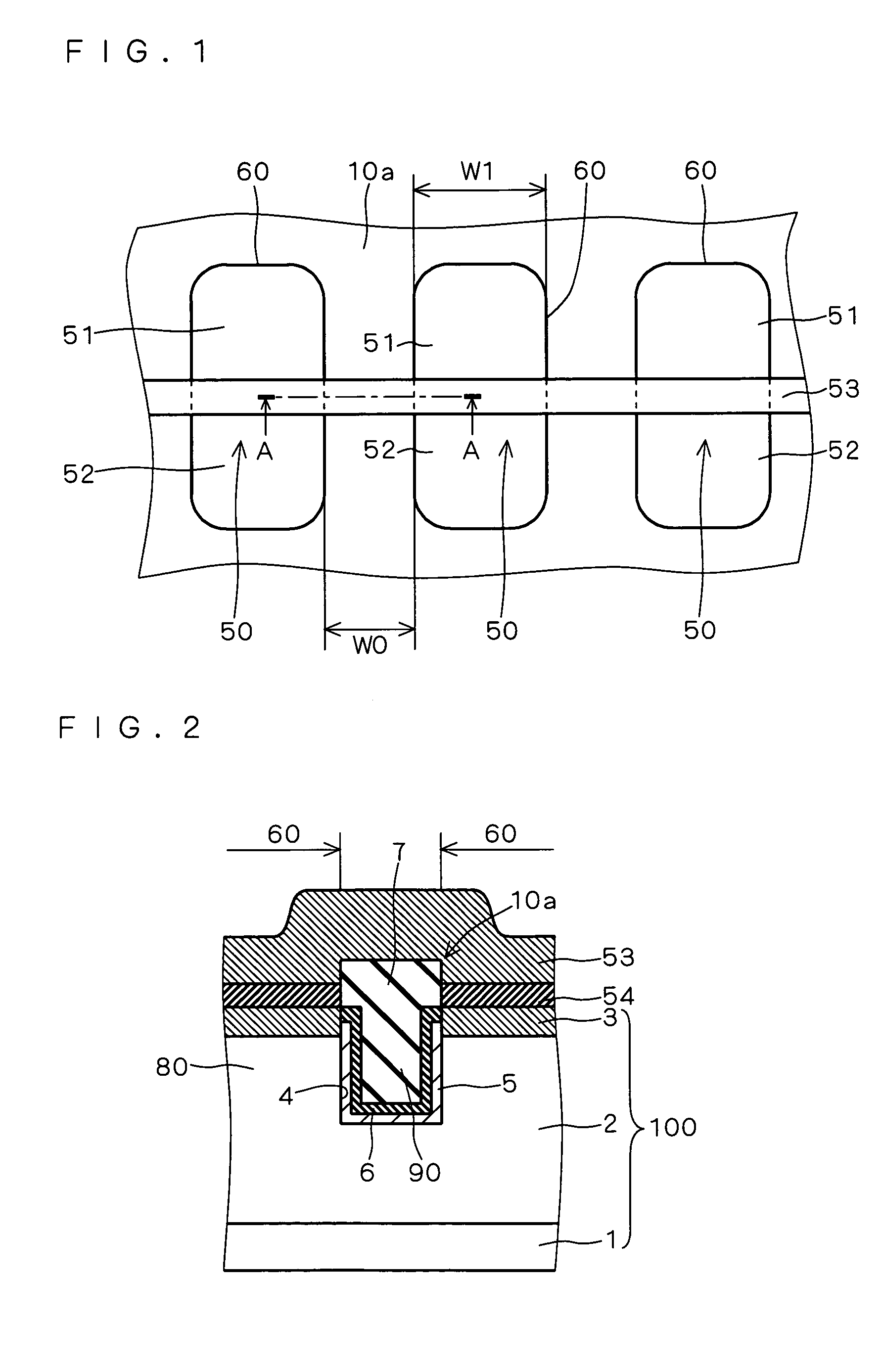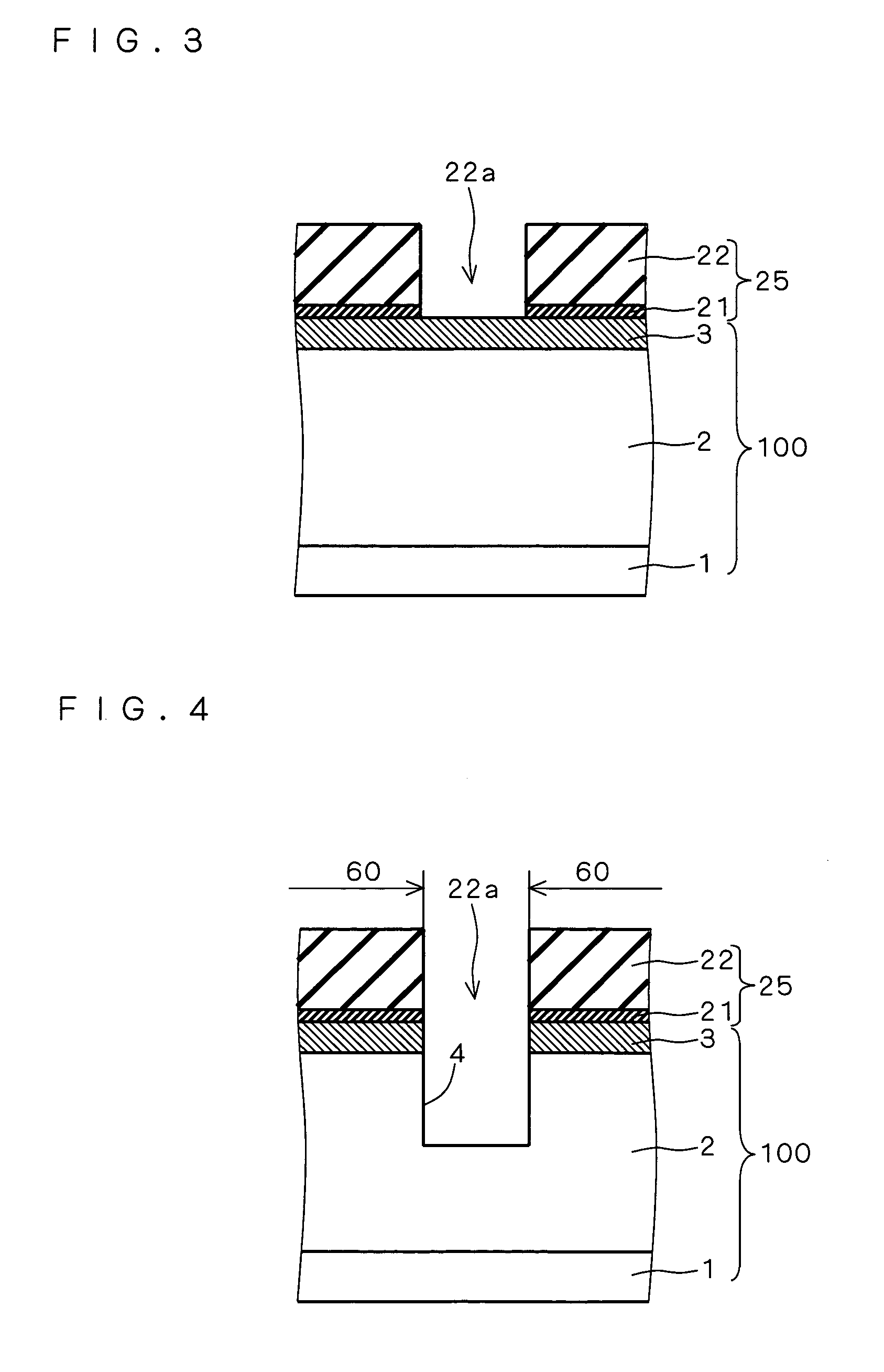Heterojunction semiconductor device with element isolation structure
a semiconductor device and isolation structure technology, applied in the direction of transistors, basic electric elements, radiation controlled devices, etc., can solve the problems of becoming increasingly difficult to improve the driving capability of mos transistors formed in silicon substrates, and achieve the effect of improving the element isolation characteristic of a semiconductor device and reducing the leakage current of a semiconductor elemen
- Summary
- Abstract
- Description
- Claims
- Application Information
AI Technical Summary
Benefits of technology
Problems solved by technology
Method used
Image
Examples
first preferred embodiment
[0030]FIG. 1 is a plan view showing the structure of a semiconductor device according to a first preferred embodiment of the present invention. FIG. 2 is a sectional view taken along the line A—A as indicated by the arrows in FIG. 1. As shown in FIGS. 1 and 2, the semiconductor device of the first preferred embodiment has a semiconductor substrate 100. The semiconductor substrate 100 has a silicon substrate 1, a compound semiconductor layer 2, and a semiconductor layer 3. The compound semiconductor layer 2 is a SiGe layer, for example. The semiconductor layer 3 is a Si layer, for example. The silicon substrate 1, the compound semiconductor layer 2 and the semiconductor layer 3 are laminated in this order, and the compound semiconductor layer 2 and the semiconductor layer 3 form heterojunction. As a result, the semiconductor layer 3 becomes a strained Si layer.
[0031]An element isolation structure 10a is formed in the semiconductor substrate 100, and a plurality of element forming reg...
second preferred embodiment
[0054]FIG. 9 is a sectional view showing the structure of a semiconductor device according to a second preferred embodiment of the present invention. FIG. 10 is a sectional view showing in enlarged dimension the area B in FIG. 9. The semiconductor device of the second preferred embodiment differs from the semiconductor device of the first preferred embodiment in that an element isolation structure 10b is provided instead of the element isolation structure 10a. The element isolation structure 10b has a semiconductor film 5 and an insulating film 6 that are of different shapes than in the element isolation structure 10a. Note that FIG. 9 is a sectional view taken at a location corresponding to the line A—A as indicated by the arrows in FIG. 1.
[0055]As shown in FIGS. 9 and 10, the semiconductor film 5 provided on the surface of a trench 4 is in contact with the entire region of the inner surface of a compound semiconductor device 2 that is exposed by a trench 4, and with the entire reg...
third preferred embodiment
[0066]FIG. 14 is a plan view showing the structure of a semiconductor device according to a third preferred embodiment of the present invention. FIG. 15 is a sectional view taken along the line C—C as indicated by the arrows in FIG. 14. FIG. 16 is sectional view showing in enlarged dimension the area D in FIG. 15. In FIG. 14, a semiconductor film 35 is omitted to avoid the complexity of the drawing. A semiconductor device of the third preferred embodiment is basically the same as the semiconductor device of the first preferred embodiment, except that an element isolation structure 10c is provided instead of the element isolation structure 10a, and that the semiconductor film 35 is added. The element isolation structure 10c has a semiconductor film 5 and an insulating film 6 that are of different shapes than in the element isolation structure 10a of the first preferred embodiment.
[0067]Referring to FIGS. 14 to 16, a semiconductor film 5 provided on the surface of a trench 4 is in con...
PUM
 Login to View More
Login to View More Abstract
Description
Claims
Application Information
 Login to View More
Login to View More - R&D
- Intellectual Property
- Life Sciences
- Materials
- Tech Scout
- Unparalleled Data Quality
- Higher Quality Content
- 60% Fewer Hallucinations
Browse by: Latest US Patents, China's latest patents, Technical Efficacy Thesaurus, Application Domain, Technology Topic, Popular Technical Reports.
© 2025 PatSnap. All rights reserved.Legal|Privacy policy|Modern Slavery Act Transparency Statement|Sitemap|About US| Contact US: help@patsnap.com



